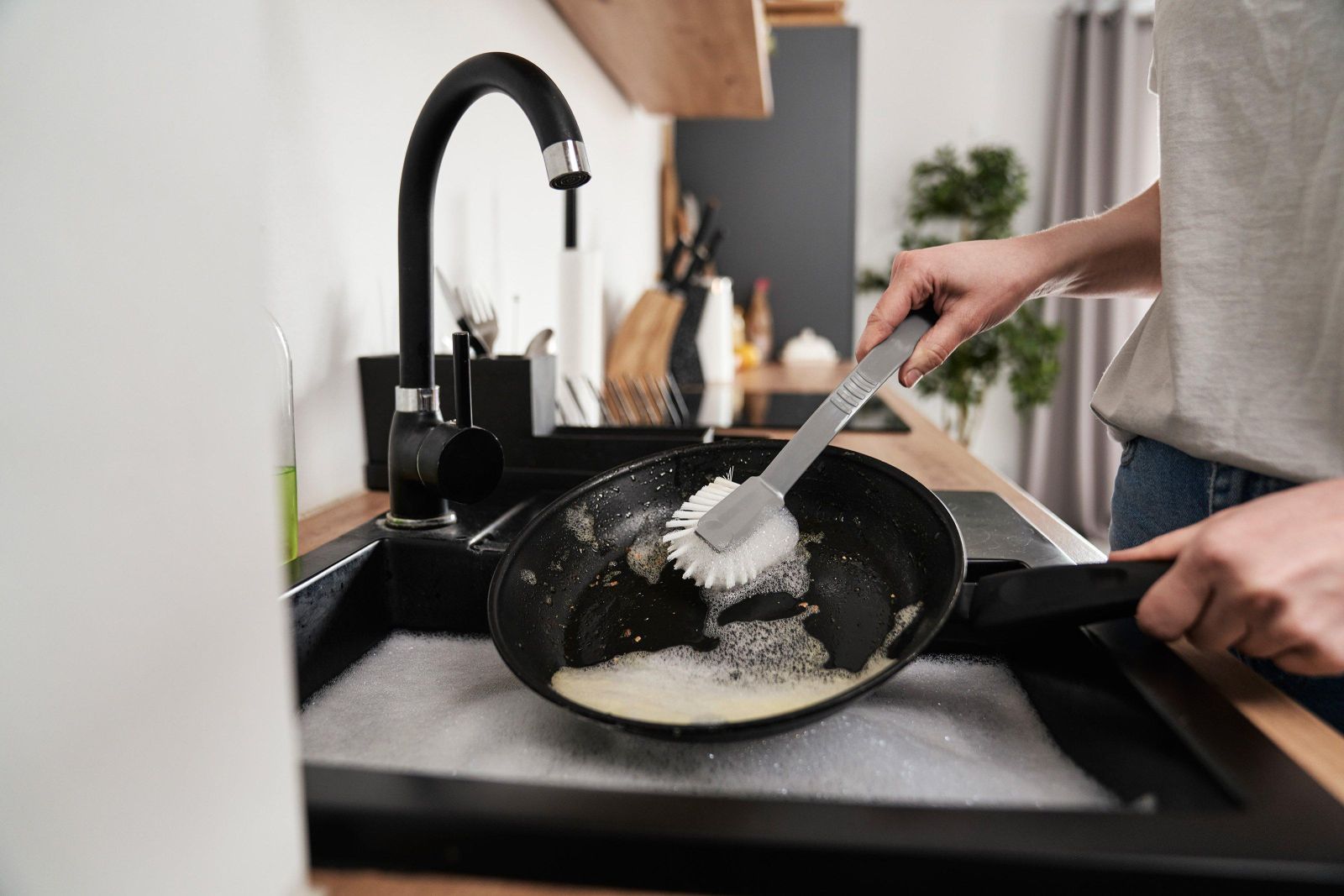Punt PFAS Products From Your Home
Expert Cited: Dr. Linda Birnbaum
You might not know their name, but PFAS are probably lurking in your kitchen, your closet, and even your body. These "forever chemicals" are a blanket term applied to a variety of man-made chemicals that have been used to make everyday products water-resistant, stain-repelling, and grease resistant.
When they were first introduced to the market, people were wowed by their convenience. Unfortunately that convenience comes at a cost because now these tiny toxins are everywhere and we don't know how to get rid of them!
We're not sharing this info to freak you out or unnecessarily raise alarm bells. We're hoping to make you a little more aware of PFAS so you can make choices that might reduce your exposure to them from the products you use.
Everyday items containing PFAS
Unfortunately, PFAS are in more items than you might think. Here's some commonly used items you might encounter in your normal day-to-day routine that could contain these everlasting chemicals:
Food Packaging:
- Examples: Microwave popcorn bags, fast food wrappers and containers, pizza boxes, candy wrappers, and some types of food packaging paper.
- Reason: PFAS are used to make these materials grease-resistant.
Non-stick Cookware:
- Example: Teflon-coated pans and other cookware with non-stick surfaces.
- Reason: PFAS, particularly PFOA, were historically used in the manufacturing of Teflon. While PFOA is largely phased out in the US, it may still be present in older cookware or in cookware manufactured in other countries.
Stain-Resistant and Waterproof Clothing and Fabrics:
- Examples: Raincoats, waterproof jackets, hiking boots, upholstery, and some carpets.
- Reason: PFAS are used to create durable water and stain repellency.
Personal Care Products:
- Examples: Some waterproof mascaras, foundations, and other cosmetics.
- Reason: PFAS can make products water-resistant and long-lasting.
Household Cleaning Products:
- Examples: Certain stain removers and carpet cleaners.
- Reason: PFAS can enhance cleaning power.
Other Products:
- Examples: Dental floss, ski wax, some paints, and varnishes.
- Reason: PFAS can provide desired properties like slickness, water resistance, and durability.
The good news is that some PFAS have been phased out or had their use restricted over the decades (thanks to work by toxicology experts like Dr. Linda Birnbaum). However, they're still prevalent in many industries and manufacturing processes.
What can you do to limit exposure to PFAS?
From the list above, you can see that PFAS are in a lot of stuff we might use often. Here are three tips you can consider if you're looking to reduce these toxins in your home and body.
- Labeling: It's not always easy to identify PFAS in products as they may not be listed on labels. However, terms like "stain-resistant," "water-resistant," or "non-stick" can be clues.
- Alternatives: Look for products labeled as PFAS-free or choose alternatives like cast iron cookware, stainless steel water bottles, and natural fiber clothing.
- Reduce Exposure: Limit your use of products suspected of containing PFAS and avoid heating non-stick cookware to high temperatures, as this can release PFAS into the air.
Studies have linked PFAS exposure to a whole host of health problems, from cancer and liver damage to immune system dysfunction and developmental issues. It's enough to make you want to ditch those non-stick pans and opt for a cast iron skillet instead!
But don't panic just yet. By understanding where PFAS are hiding, we can make informed choices about the products we use and support policies that protect our health and the environment. It's time to take back control and show these "forever chemicals" the door!





